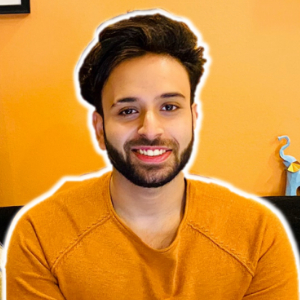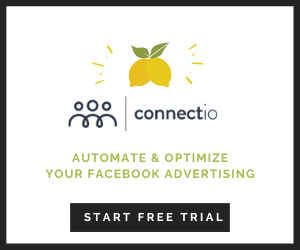As the world is going digital, media buying is becoming one of the most sort-after skills. Unfortunately, there isn’t much content which talks about campaign trafficking and media buying tips and tricks. So, in this article, I’m going to talk about some of the best practices, tips, and tricks that can help you get started with media buying across Google Adwords, Facebook, and native ad networks. However, before we jump into the media buying tips and strategies, let us take a sneak-peak into the underlying fundamentals of media buying and how optimization works for a small delivery of ads. A seasoned media buyer can make use of price differences across markets to start a retail arbitrage business.
Understanding the Basics of Media Buying
As a campaign manager or trafficker, it is extremely crucial for you to understand the fundamentals of media buying and how ad delivery is scheduled, the algorithm behind it and how you can ensure a higher return on investment for your advertising spends.
Targeting the appropriate audience is the key for a successful campaign and optimizing it to reach a better ROI is what your end objective should always be. I would always suggest you to choose those ad networks which provide complete transparency when it comes to the traffic sources and have the most sophisticated and detailed targeting options. Although the CPC might be more but you’ll end up getting a much higher ROI and campaign scalability would be easier. Some of the ad networks that I would recommend are:-
- Google Adwords
- Taboola
- Outbrain
The CPCs for tier 1 traffic would be anywhere around 15-20 cents while those of tier 2 traffic would be less than 5 cents. However, a lot depends on the audience you’re targeting, the CTR of your ad, and the ad quality score. Since these work on real-time bidding, your ads will be shown only if your ad quality score is somewhere close to the network average. In the subsequent segment, we are going to discuss why creative optimization is crucial and how it can significantly lower your average CPC and generate higher ROI for your ad campaigns.
What You Need to Understand Right Away: The Algorithm Working Behind Serving an “Ad Creative”?
The quality score of any ad creative depends on a number of factors but majorly depends on
- the landing page of the advertiser
- the content of the creative like the title, thumbnail
- the ctr of the ad
Now consider 2 different ad campaigns, the first one is named as “A” and the second one is named as “B” but both of them have the same landing page (the creatives are just different). You have assigned a maximum CPC of 20 cents to both of the ads (assume that 20 cents is the network average). Once both of the campaigns are up and running, assume the CTR of ad “A” is 1% and the CTR of ad “B” is 2%.
Assume that the network average CTR is 1%.
Now, you start lowering the CPC of both the ads “A” and “B” by 1 cent gradually and you’ll slowly notice that the impressions and daily budget will not be met for ad A while ad B will continue to meet the daily impressions and budget.
This is because, as you lower the CPC of ad “A” the ad visibility score (CPC * CTR) goes below the average threshold and they don’t get enough winning impressions to get displayed. However, for the ad “B” the ad visibility score continues to be high despite the gradual decrease in CPC since the ad CTR is almost double the network average, thus, you can continue to lower the CPC rates till a threshold where you’ll see the impressions eventually going down.
So, now you must understand why creative optimization is so crucial–since it heavily determines the ad CTR and the overall ROI for the campaign. Next, we are quickly going to see why optimizing your landing page is crucial and the approach to an efficient campaign optimization strategy.
Media Buying Tips and Tricks: Landing Page Optimization in 2021
- Ensure your landing page is optimized well to attain the highest level of ROI and the essential factors are taken care of for the desired conversions.
- The page speed score should be good and the page loading time should be as low as possible to ensure better conversion for every click.
- The contents of the landing page should be relevant to the ad teasers and shouldn’t have any discrepancy in terms of content and service as claimed in the advertisement.
Media Buying Tips and Tricks: Campaign Optimization in 2021
Here, we are going to discuss some of the crucial media buying tips and tricks that can help you with campaign setup. We have tried covering as much as possible in this section, however, the campaign setting options vary based on the ad type and also the company you’re buying the traffic. Be assured, we have covered all the major aspects of campaign trafficking in this section.
- It is recommended to target desktop and mobile/tablet separately since the performance and the ROI of the platforms varies. Usually desktop CPCs are higher compared to mobile, however, the conversion rate can fluctuate based on the campaign objectives.
- Define a marketing objective which can be lead generation, online purchases, brand awareness, web engagement, mobile app install or others. This will enable the algorithm to target the appropriate audience to deliver a higher ROI.
- We recommend creating geography-specific campaigns since conversions can vary country wise unless you’re targeting a global audience (even then also you should create separate campaigns for separate countries since CPC varies country-wise).
- Operating systems can play a crucial role for your campaigns, and if it is so, you can specifically target the OS based on your campaign objectives.
- Enable brand safety like integral ad science to ensure the traffic you’re getting is genuine.
- Define your audience based on interests and keywords which would best correlate with the objective of your ad campaign.
- You have the option to select manual/fix bid or optimized/smart bid. In the first, you specifically define the CPC while in the latter you allow the algorithm to determine a CPC. You can choose either of the two, however, I would prefer a fixed CPC and then moving to a smart bid when I have to scale the campaign.
- Define your ad delivery as optimized/balanced and set up the daily or monthly spending limit. This would ensure that you’ve sufficient time to monitor the campaign and make necessary changes if needed to your campaigns.
- Setup macros to further track the source of your traffic across campaigns so that you can better optimize the conversions and monitor the ROI. We will write a separate article on tracking code and marcos for more in-depth information.
Media Buying Tips and Tricks: Creative Optimization in 2021
- Make sure your headlines, description, and thumbnails are relevant if it is a Facebook or native ad. For a banner ad unit, ensure it is clutter-free and has the basic information to create excitement and definitely a call to action button.
- A/B test your campaign headlines by having 2 different headlines. Each should be having 4-5 different thumbnails of images so that you can test which creative is working best along with which headline test.
- Ensure your headlines have phrases that trigger a call to action. This will ensure higher ad CTR and will boost your overall ROI.
- Include an element of concern, mystery, care, compassion, wonder, childhood..
- Ensure your headline is not too long and the creative is optimized for desktop, tablet, and mobile if you are targeting all the devices.
- Call to action buttons would be highlighted in bold colors so stand out, and this will again ensure a higher CTR.
To know more about creative optimization, we suggest you read our article on creative optimization tips and tricks.
Media Buying Tips and Tricks: Conversion Optimization in 2021
- In order to track conversions and optimize it, you need to set up analytics data and also setup pixel data from your media buying source.
- Conversion categories can range from lead, wishlist, add to cart, app installs, purchase. View content, add payment info, start checkout, and others. So, you need to assign the desired conversion outcome and optimize your campaigns to achieve the highest conversion goals.
- You can assign a value for your conversion both on google analytics and in your campaign settings to monitor the performance and ROI.
- You can assign the conversion window anywhere between 1 to 15 days to see how visits are converting.
- You can assign URL based or event-based tracking for your conversions. Since this requires further inputs, we will be devoting a separate writeup on URL based and event-based conversion tracking.
- You need to ensure a minimum discrepancy between the number of conversions and conversion rate when compared with google analytics vs actual campaign data. A difference of 10-20% would still exist based on how both the parties analyze and handle the data, possible audience loss and also a possibility of bot traffic.
This is a detailed overview of how you can traffic your ad campaigns and the best practices that you need to follow. However, there are quite a number of topics like UTM parameters, performance tracking, campaign budget optimization that you should definitely take a look to further enhance your knowledge on media buying. Hope this article on media buying tips and tricks for marketers was helpful.
Our 'Handpicked' Tools for Internet Mareters
- Native Advertising Software Tool: Brax, Anstrex
- Facebook Advertising Software Tool: Audiencer, Revealbot, Connectio,
- Social Media Advertising Software Tool: SproutSocial, SocialBee,
- Internet Marketing Software Tools: Semrush, SproutSocial,



I and my team research various media buying platforms and can help you choose the right network; so you could rake in more greenbacks with an increased ROAS. I am just a mail away, so reach out to me if you need assistance with scalable media buying. mail: [email protected]


